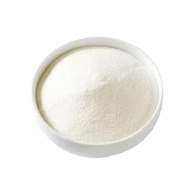
# We sell plastic raw material # LDPE Resins
Production method
Both LDPE Resins and LLDPE have good rheological or melt flow properties.LLDPE has less shear sensitivity because it has a narrow molecular weight distribution and short branched chains. In shear processes (e.g., extrusion), LLDPE maintains a greater viscosity and is therefore more difficult to process than LDPE with the same melt index. In extrusion, the lower shear sensitivity of LLDPE results in faster stress relaxation of the polymer molecular chains, and the resulting physical properties are less sensitive to changes in blow-up ratio.
In melt extension, LLDPE generally has a lower viscosity at all strain rates. This means that it will not strain harden in tension as LDPE does. As the rate of deformation of the polyethylene increases, LDPE shows a surprising increase in viscosity, which is caused by molecular chain entanglement.
This phenomenon is not observed in LLDPE, where the lack of long branched chains makes the polymer non-entangled. This property is extremely important for film applications, as LLDPE films are easier to make thinner films while maintaining high strength and toughness.The rheological properties of LLDPE can be summarized as "rigid in shear" and "soft in extension". Film extrusion equipment and conditions must be modified when replacing LDPE with LLDPE. The high viscosity of LLDPE requires higher power extruders and higher melt temperatures and pressures. Die gap spacing must be widened to avoid lower output due to high back pressure and melt breakage.
The "soft on stretch" characteristic of LLDPE is a disadvantage in the blown film process; LLDPE blown film bubbles are not as stable as those of LDPE. A typical single-lip air ring is sufficient for LDPE stabilization, but the unique bubble of LLDPE requires a more sophisticated double-lip air ring for stabilization. Cooling the internal bubble with a double-lip air ring increases bubble stability while increasing film production capacity at high production rates. In addition to better bubble cooling, many film producers use blending with LDPE to enhance the solubility of LLDPE. Extrusion of LLDPE can be accomplished on existing LDPE film equipment when LDPE blends contain up to 50% LLDPE. When processing 100% LLDPE or LLDPE-rich blends with LDPE Resins, it is necessary to improve the equipment by using a general LDPE extruder.
Depending on the life of the extruder, improvements may include wider die gaps, improved air rings, modified screw design for better extrusion, and increased motor power and torque if necessary. For injection molding applications, equipment improvements are generally not required, but processing conditions need to be optimized. The rotomolding process requires that the LLDPE be ground into uniform pellets (35 mesh). The process consists of filling the mold with powdered LLDPE, heating and rotating the mold biaxially to distribute the LLDPE. After cooling the product is removed from the mold.
If you need other plastic&rubber raw material, please transfer to our Product Page and find it!
Hot Tags: ldpe resins, China ldpe resins manufacturers, suppliers, factory, high density polyethylene raw material, hdpe ldpe granules, pps plastic raw material, plexiglass raw materials, low density polyethylene resin, raw material for polythene





